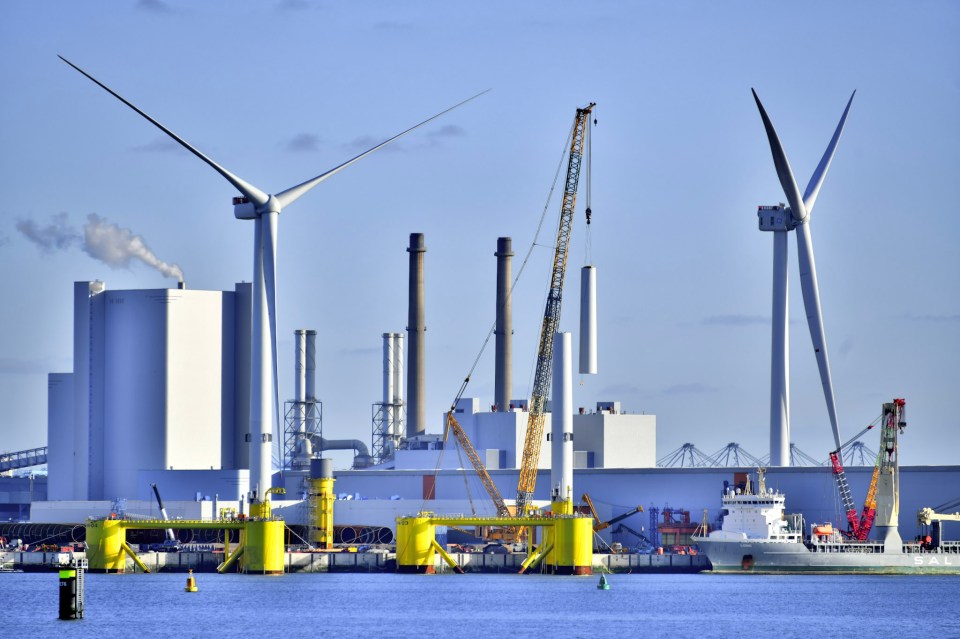Floating offshore wind could offer £26bn boost to green economy

Floating offshore wind gives the UK a chance to make the most of the green energy transition, supporting a technology it is currently a world leader in to boost jobs and revitalise domestic industry, a leading renewables group has argued.
Renewable UK – which specialises in wind and tidal power – published its report on floating offshore wind last week, revealing the UK was well positioned to become a global leader in floating wind technology, with the biggest project pipeline in the world of 37GW (one-fifth of global projects).
It calculates that if 11 ports near the North Sea and Celtic Sea were upgraded to store materials, boost local supply chains and tow the turbines out to sea for installation, it would create a domestic industry that could generate £26.6bn in economic activity by 2040 – backed by tens of thousands of jobs.
This would come at an initial cost of £4bn, which Renewable UK argues could be achieved with a mix of taxpayer and private funding.
Laurie Heyworth, policy analyst for emerging technologies at Renewable UK, told City A.M. that the “nascent market” provided the government with a chance to look at the energy transition as more than just a race to reach generation targets.
He believed floating offshore wind would boost the UK’s levelling up agenda, and allow a more complete green energy transition where the country built a thriving domestic industry centred around renewable projects.
| Energy Source | Generation Capacity | Generation Target | Date |
| Hydrogen | <1GW | 10GW | 2030 |
| Offshore Wind | 13GW | 50GW | 2030 |
| Solar | 14GW | 70GW | 2035 |
| Nuclear | 7GW | 24GW | 2050 |
He said: “I think it all depends on what the government’s priority is – if it’s just to deploy as much wind as possible into the North Sea you can do that. You can do that at lowest possible cost, but you’ll start to lose out on supply chains.
“Is it to just deploy everything, and import things cheaply from like China where they have low labour costs? Or does the government actually want to live up to their word of ‘levelling up’ and stimulate the local supply chain and get all the benefits of that.”
Heyworth considered the current decade to be “defining years” for renewable energy, with the government aiming to increase offshore wind generation from 12GW to 50GW by the end of the decade as part of its energy security strategy.
This includes 5GW of floating offshore wind generation.
Floating offshore wind turbines are buoyant on the surface – supported by a platform and often connected to the seabed by cables – allowing them to be installed in much deeper waters than conventional turbines.
They are also vast in size, with average floating offshore wind turbine being as tall as the Shard and consisting of double the concrete of the Eiffel Tower.

Heyworth explained: “This requires a lot of development in ports, because it’s not like traditional shipping with cargo. You need deeper berths, you need wider access channels, and the quay needs more area for actual storage to like store it, to enable a sort of assembly line – so integration can keep happening like a conveyor belt.”
As it stands, there are just two floating offshore wind farms in the UK with limited capacity, Hywind (30MW) and Kincardine (50MW), operated by Equinor and Principle Power respectively.
However, developments are expected to rise sharply over the current decade, with mass industrialised deploy expected from around 2027.
Floating offshore wind has been included in the upcoming auction round for offshore wind developments next month, with RWE expected to bid for at least 1GW of the 4GW up for sale in the Celtic Sea, while the Crown Estate in Scotland has been undertaking its own leasing rounds.

Environmental think tank Green Alliance was also pushing the government to make the most of its early advantage.
Dustin Benton, policy director, said: “Floating offshore is a massive opportunity. The largest long-run export opportunities for offshore wind are in places where the sea bed is too deep for fixed foundations. The industry is still at an early stage, but the UK is in a very strong position to lead its development, given comparative advantage as a windy island nation and high existing skills base in offshore technologies.”
The industry is currently awaiting to see if the government will make any more announcements over wind power at the upcoming ‘Green Day’ – its long-awaited response to the US Inflation Reduction Act.
When approached for comment, the government told City A.M. it recognised the concerns over ports.
A department for energy security and net zero spokesperson said: “The government appreciates the potential of floating offshore wind and the UK already has the world’s first and largest floating windfarms. We also recognise the important role that ports play in deployment of offshore wind and we will set out the next steps on our Floating Offshore Wind Manufacturing Investment Scheme soon.”